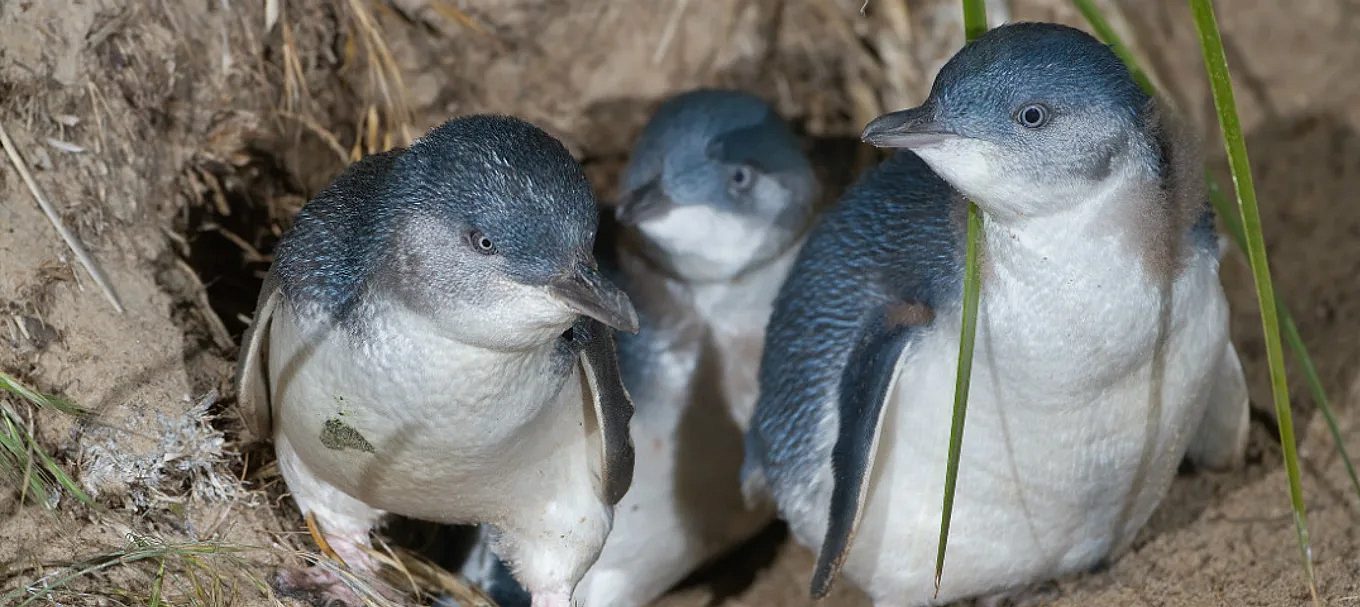
Celebrating the littlest of penguins
Find out more about South Australia’s little penguin population and the conservation efforts to help protect them.
Did you know there are only 17 species of penguins in the world, and the smallest of the lot just so happen to live right here in South Australia?
That’s something to celebrate on World Penguin Day, held globally on 25 April each year.
Previously referred to as ‘Fairy Penguins’, the little penguin (Eudyptula minor) is an iconic, flightless seabird, which lives and breeds in Australia and New Zealand. It is one of 17 species of penguin, all of which are found in the southern hemisphere (Australia, New Zealand, Antarctica, sub-Antarctic islands, South America and Africa).
It is a relatively common species in the waters of southern Australia, and New Zealand. Colonies can be found from the north coast of New South Wales, down to Tasmania, and across to the start of the Great Australian Bight, as well as southern Western Australia.
What we know about Little Penguin lifespan
In South Australia, little penguins typically breed between April and February of the subsequent year, and double brooding is common.
The average lifespan of the little penguin is six and a half years, but they have been recorded living for about 26 years in the wild.
They typically lay two eggs per clutch, have a 35-day incubation period. The parents will provide food for their chicks over an eight-to-ten-weeks. For the first two-to-three weeks following hatching, the parents alternate between guarding the chick and going on one-to-two day foraging trips. Little penguins reach sexual maturity at two-to-three years of age.
Following fledging, the survival rates of little penguins in South Australia is estimated to be 2 per cent in their first year. After that, survival rates increase to just 16 per cent in the second and third years.
Adults moult each summer after the breeding season, and this usually takes around three weeks. During this time, they are restricted to land and can lose a large proportion of their fat stores. They are also vulnerable to extreme weather conditions such as heat during this time.
Are Little Penguins under threat?
In 2011 there was an estimated 300-500,000 breeding individuals nationally.
In South Australia, the population size is estimated at 36,600 breeding individuals, unevenly distributed across approximately 100 colonies.
Some South Australian colonies have shown declines in recent years while others appear to be stable.
Little penguins are listed as least concern on the International Union for Conservation of Nature Red List of Threatened Species. They are not listed as a threatened species at a national or state level.
Despite not being officially listed as threatened, a number of potential threats exist for little penguins.
These include entanglement in fishing or aquaculture nets, impacts and fluctuations in food sources, predation by domestic pets, feral animals (rats, cats and foxes) and native animal (seals and sharks), traffic collision, loss of habitat, and pollution and degradation of coastal and marine habitats.
The recovery of long-nosed fur seals in South Australia (which are a native species to southern Australia), following the end of sealing in the 1900s, has been blamed for declines in some little penguin colonies. Across the state however, some penguin colony populations are stable, despite them coexisting with large populations of long-nosed fur seals.
What is being done to protect Little Penguins?
Conservation actions are based on a scientific report into little penguin populations in Gulf St Vincent. Actions include resourcing penguin ecologists to monitor nest sites and breeding success, and specific reasons for colony declines.
Some nests are monitored with motion-activated cameras to record breeding and predator activity. Take a look at these ‘nest cam’ photos and this short video about the little penguins’ conservation project.
Did you know?
- Little penguins secrete oily liquid from their tails which is rubbed over their feathers. This is to keep themselves waterproof so they can maintain a constant body temperature while at sea hunting for fish.
- Little penguins can sleep at sea dozing on the water surface.
- Little penguins can travel distances of over 1000 km in the first year of its life.
South Australia has many threatened plant and animal species, learn more about ten of the state’s lesser-known threatened species.





